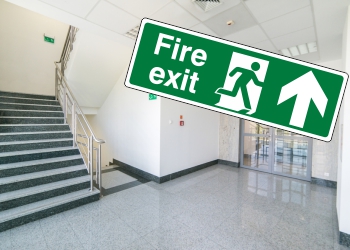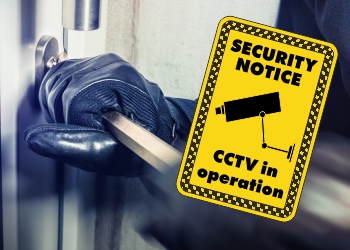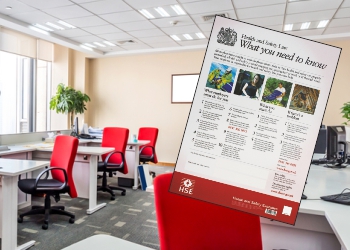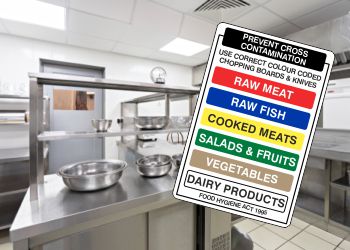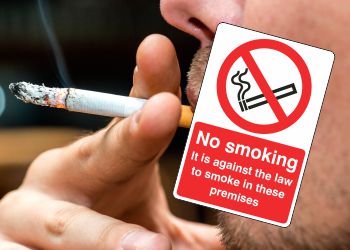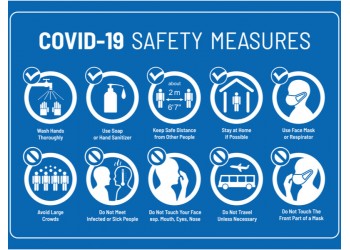Fire safety is an important consideration for any business. In fact, here in the UK, it is a legal requirement for all working buildings to ensure that appropriate regulations are followed and maintained throughout the year. The correct fire safety signs are one of the key ways in which you can protect the safety of every visitor, guest or employee within your business. For new businesses, these requirements can be overwhelming and confusing. This is why we’ve pulled together this detailed guide to walk you through your legal requirements and the right signs to suit your needs.
What is a fire safety sign?
According to The Health and Safety (Safety Signs and Signals) Regulations 1996 a fire safety sign is one which:
- Provides information on escape routes and emergency exits in case of fire.
- Provides information on the identification of the location of firefighting equipment.
- Gives warning in case of fire.
Therefore, fire safety signs fall into two different categories – those that identify firefighting equipment and those that identify emergency exits. Both of these are required in nearly all working buildings so it is important that you understand the difference. Remember, it is the duty of the employer to ensure adequate health and safety signs are provided wherever there is a risk to an employee or member of the public.
A clear way of identifying the difference is:
- Red signs should be used for firefighting equipment.
- A green sign should be used for emergency exit signs.
It is also worth noting that, according to these regulations, fire safety signs MUST have both text and pictograms. This will ensure easy understanding by all and ensures a business is also able to comply with fire certificate needs.
Where should fire exit signs be placed?
There are both general rules as to the distribution and location of signs and some that need to be determined according to each building.
- Fire exit signs should be placed on every doorway, escape window or alternative route which provides an exit or means or escape during a fire or any other emergency situation.
- You must choose an appropriate fire exit sign wherever there is deemed a risk to your employee’s safety. To identify these risks, an appropriate risk assessment should be carried out.
- Where no immediate ‘risk’ is detected but a building presents a complicated layout or has a choice of exits, signs should be used to clear up potential confusion.
- Fire exit signs should be used when the nearest emergency exit is not the main entrance or exit. This advises people that there is an additional means of exit, in the event of an emergency.
- Fire exit signs should be displayed immediately above the exit opening. Where this is not possible, the sign should be positioned where it can be clearly seen and is unlikely to become obstructed.
- For hidden exits, directional fire exit signs should be used to create an escape route.
- In shared buildings, the owner of the building should take responsibility to ensure a universal fire exit route is created so to avoid confusion.
- ‘Keep Clear’ signs should be used for fire doors where there is a risk that the route may become obstructed.
- Where the nearest exit is up or down the stairs, fire exit signs should be placed within the staircase with clear directional arrows.
What about sign care?
To stay compliant with regulations, all fire exit signs should be properly maintained and fixed securely. Many signs can be designed and manufactured in a range of materials to ensure this. Here at Lasting Impressions, we offer either a self-adhesive vinyl or 1mm rigid plastic. Key benefits of both include:
- Suitable for both interior and exterior use.
- Cost effective.
- Can be used to fix signs to any smooth, flat surface. Manufactured from a flexi gloss vinyl with permanent self-adhesive backing.
- Can be used on curved surfaces
- Suitable for both interior and exterior use.
- Manufactured from 1mm high impact polystyrene plastic.
- Tougher option with high impact strength.
- Smooth matt surface can be easily drilled.
- Can be installed to most surfaces with double-sided tape or mastic
No matter what material you choose, opt for one that can be wiped clean easily. This will ensure high visibility at all times, which leads us on to our next point.
What about sign visibility?
To stay compliant, you are legally required to make sure all signs are visible at all times. There are two factors to consider here – viewing distance and lighting.
Viewing distance
Where you position your sign will have an impact on how easily the information can be read and understood. At Lasting Impressions, we use bold font, highly contrasting colours and universally acceptable pictograms. However, distance remains a significant factor. Our signs are available in a range of different sizes which are individually appropriate for different distances. You will find a clear and easily understood Viewing Distances guide on every product page. So, for example, our EC Fire Exit Arrow Up Sign comes in 3 different sizes. The appropriate viewing distances are as follows:
Size 1 (Landscape: 300mm x 100mm / Portrait: 200mm x 300mm) – Viewing distance: Up to 10m.
Size 2 (Landscape: 450mm x 100mm / Portrait: 300mm x 400mm) – Viewing distance: Up to 15m.
Size 3 (Landscape: 600mm x 200mm / Portrait: 400mm x 600mm) – Viewing distance: Up to 20m
From the distances recommended, the user will still be able to read any text and clearly understand the images being shown.
Lighting
All fire safety signs should be suitable lit to ensure high visibility. Something to consider is whether your workplace has emergency lighting in place in the form of external lamps or internal lamps. In the event of an emergency, will these provide suitable illumination to ensure the sign information can be read?
An alternative to emergency lighting is glow in the dark or ‘photoluminescent’ signs. These are individually screen printed and charge with either natural or artificial lighting. Should the power go in your property or light becomes insufficient, the sign will emit a glow which allows it to be read clearly. It is, therefore, possible to minimise the additional risk raised by power cuts and allow individuals to still follow a clear and concise escape from your building.
At Lasting Impressions, we have a wide range of Photoluminescent signs, available in both self-adhesive vinyl or plastic. The benefits of both can be seen here:
Photoluminescent Self-Adhesive Glow in the Dark Signs
- Permanent self-adhesive.
- High-intensity luminous properties.
- Stores light from conventional sources.
- Easy to charge.
Photoluminescent Plastic Vinyl Fire Exit Signs
- 1.2mm rigid plastic.
- High-intensity luminous material enclosed in UV stabilised plastic.
- Easy to charge.
- High impact strength
What are the rules for fire fighting equipment signs?
Although many rules remain the same, there are some differences for fire fighting equipment signs. These are, as follows:
- The colour red should be used to identify the location of fire fighting equipment.
- These signs should be rectangular or circle with white symbols and/or text.
- They are designed to indicate the location of fire equipment.
- These signs should be placed close to the equipment in question or in accordance with the design of the sign In some situations, the background behind the fire fighting equipment should be coloured red.
- The sign should be sufficiently large to allow its location to be easily determined.
- If the fire fighting equipment is hidden from view, a sign should be placed in a clear position which indicates the location using directional arrows.
The Lasting Impressions Fire Safety Sign Range – EN ISO 7010:2012
Here at Lasting Impressions, we design and create signs that are entirely compliant with the regulations in The Health and Safety (Safety Signs and Signals) Regulations 1996. In addition, all of our signs are compliant an EN ISO 7010:2012. But, what does this mean?
EN ISO 7010:2012 related to the symbols, safety colours and registered safety signs used. It is there to bring international consistency to health and safety signs. To comply, we design our signs using the new, acceptable pictographs which minimises the risk of confusion and reduces the risk of accidents in your workplace. Additional information about this compliance can be found here.
Further Information
We pride ourselves in staying up to date with all relevant legal requirements when it comes to signs, especially those surrounding fire exit signs. This helps you to ensure full safety for all your visitors, guests and employees. And, it means that our helpful and expert sales team can provide you with the information and advice needed to find the right sign straight away.
If you need any further information about our BS 5499-2:1986 and EN ISO 7010:2012 compliant Fire Safety Signs, please don’t hesitate to get in touch. We’ll be happy to help guide you towards the right choice for your business. Alternatively, we offer a Design A Sign service that allows you to customise your design and ensure it meets all individual requirements.
Get in touch to discuss here today.
